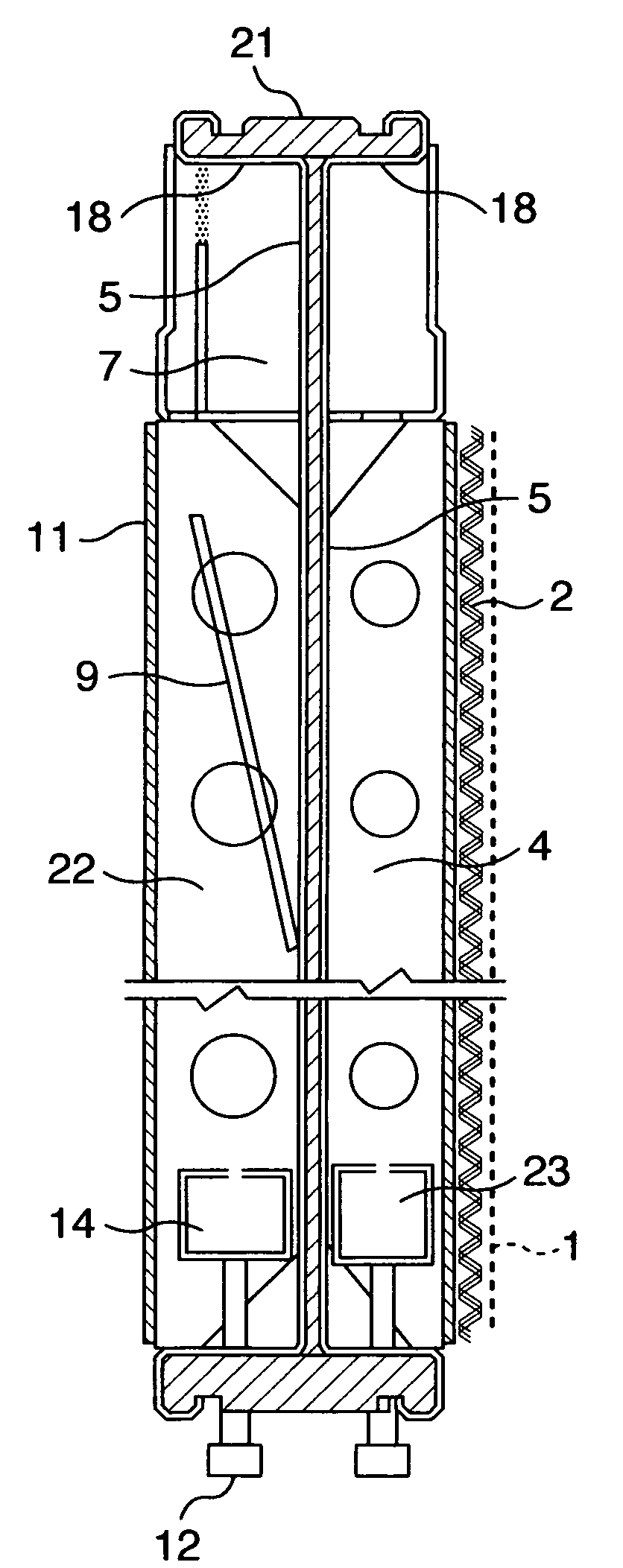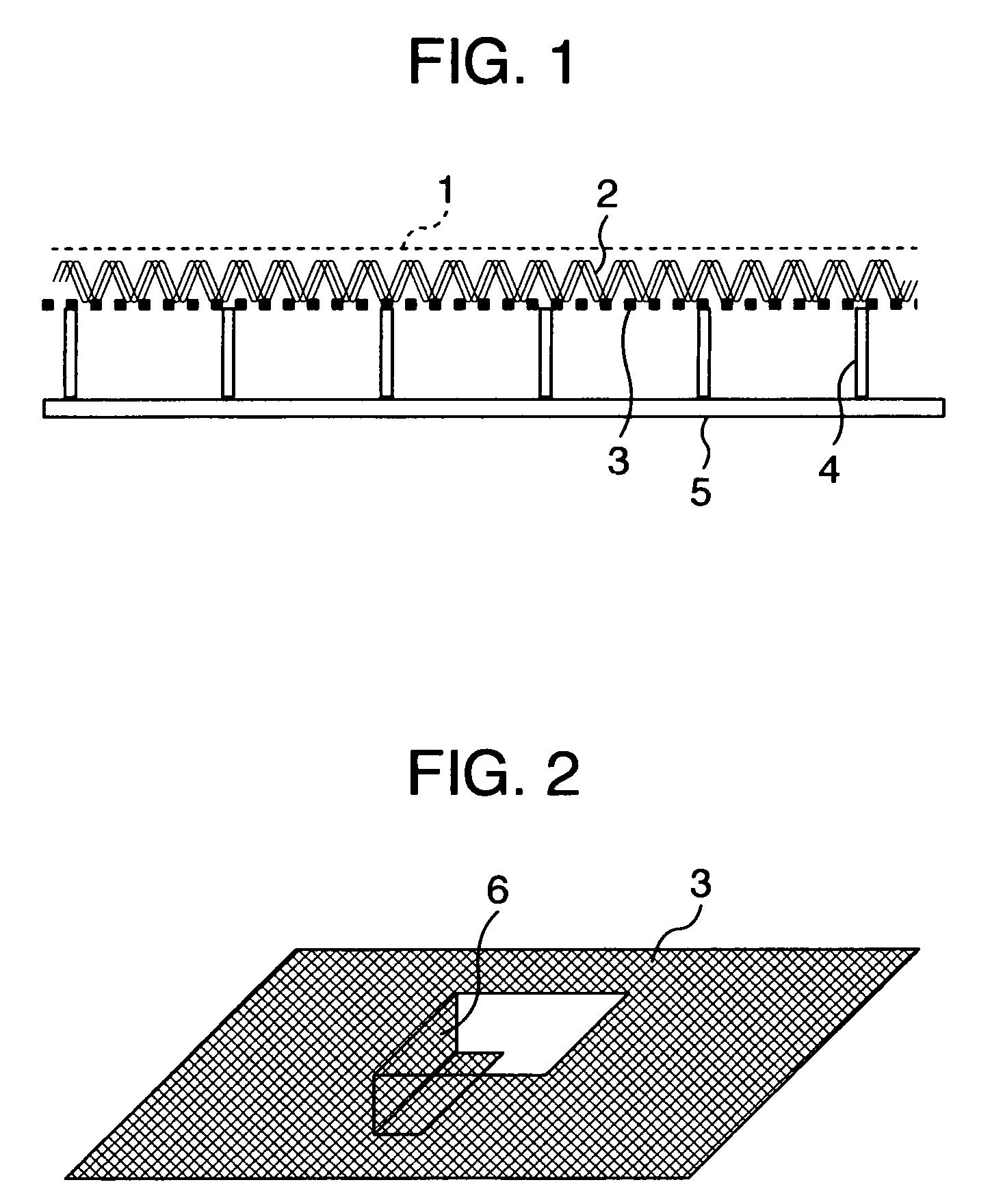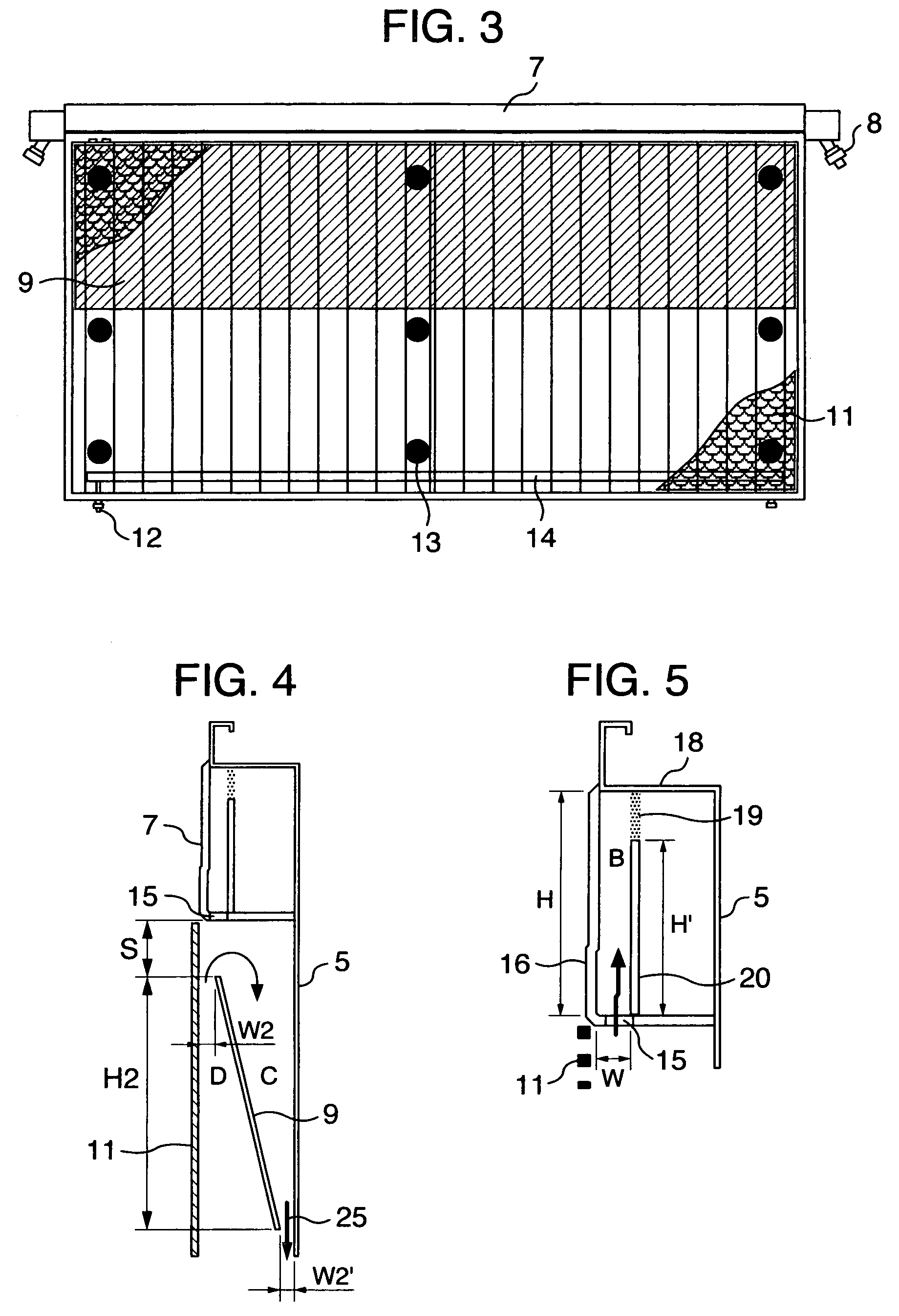Bipolar zero-gap type electrolytic cell
a zero-gap type, bipolar technology, applied in cells, electrolysis processes, electrolysis components, etc., can solve the problems of insufficient damage to the membrane in contact, and unsatisfactory improvement of long-term current efficiency and voltage, so as to prevent gas vibration and more stable electrolysis
- Summary
- Abstract
- Description
- Claims
- Application Information
AI Technical Summary
Benefits of technology
Problems solved by technology
Method used
Image
Examples
application example 1
[0087]The bipolar, zero-gap type electrolytic cells 30 according to an embodiment of the invention, each of which has an anode structure and a cathode structure similar to those of FIG. 3 and FIG. 8 and a cross-sectional structure similar to that shown in FIG. 6, are arranged in series and assembled into an electrolyzer as shown in FIG. 7. FIG. 7 shows an anode unit cell disposed at one end of the assembly and a cathode unit cell disposed at the other end and with current lead plates 28 attached as shown.
[0088]The bipolar, zero-gap type electrolytic cell 30 measures 2400 mm wide by 1280 mm high and has an anode chamber, a cathode chamber and a gas-liquid separation chamber 7. The anode chamber and the cathode chamber are each formed by a flat pan-shaped separation wall 5 and are arranged back to back. These anode chamber and cathode chamber are combined together by inserting a frame member 22 into a bent portion 18 provided at the top of the separation wall 5. Each gas-liquid separa...
reference example 1
[0107]An electrolyzer was built by using similar bipolar electrolytic cells except that the hydrogen generating cathodes used in application example 1 were modified. Used as the hydrogen generating cathode was a 14 mesh nickel wire net of a 0.4 mm wire diameter (a cathode thickness of 0.8 mm) coated with a material composed mainly of nickel oxide to a thickness of about 250 μm.
[0108]After the electrolyzer was operated under exactly the same conditions as the application example 1, similar measurements were made. The results are shown in Table 2. The results show that voltage was relatively high from the initial stage, that its rise was as large as 80 mV for 6 kA / m2 and that the current efficiency degradation was as great as 2-3%. Vibrations in the electrolytic cell were less than 5 cm in the water column for 6 kA / m2 and a concentration difference was 0.31-0.35 N on the anode side and 0.6-0.8% on the cathode side.
[0109]After 360 days of the operation, the electrolyzer was disassemble...
application example 2
[0111]An electrolyzer was built by using similar bipolar electrolytic cells except that the anodes used in application example 1 were modified.
[0112]A titanium plate of 1 mm thickness was used as the anode and the titanium plate was expanded and roll-pressed to a thickness of 1.2 mm. An opening percentage was measured to be 40%. The expanded titanium plate was etched with sulfuric acid to form irregularities on its surface whose maximum height difference was about 30 μm. It was then coated with a material composed mainly of RuO2, IrO2 and TiO2. The maximum height difference between the irregularities on the coated surface was 13 μm. The electrolyzer was operated under exactly the same conditions as application example 1 and a similar measurement was made. Measured values are shown in Table 3. Table 3 shows that a voltage rise was 50 mV for 6 kA / m2 and current efficiency degradation was 1.3%. Vibrations in the electrolytic cell were less than 5 cm in the water column for 6 kA / m2 and ...
PUM
| Property | Measurement | Unit |
|---|---|---|
| thickness | aaaaa | aaaaa |
| height | aaaaa | aaaaa |
| thickness | aaaaa | aaaaa |
Abstract
Description
Claims
Application Information
 Login to View More
Login to View More - R&D
- Intellectual Property
- Life Sciences
- Materials
- Tech Scout
- Unparalleled Data Quality
- Higher Quality Content
- 60% Fewer Hallucinations
Browse by: Latest US Patents, China's latest patents, Technical Efficacy Thesaurus, Application Domain, Technology Topic, Popular Technical Reports.
© 2025 PatSnap. All rights reserved.Legal|Privacy policy|Modern Slavery Act Transparency Statement|Sitemap|About US| Contact US: help@patsnap.com



